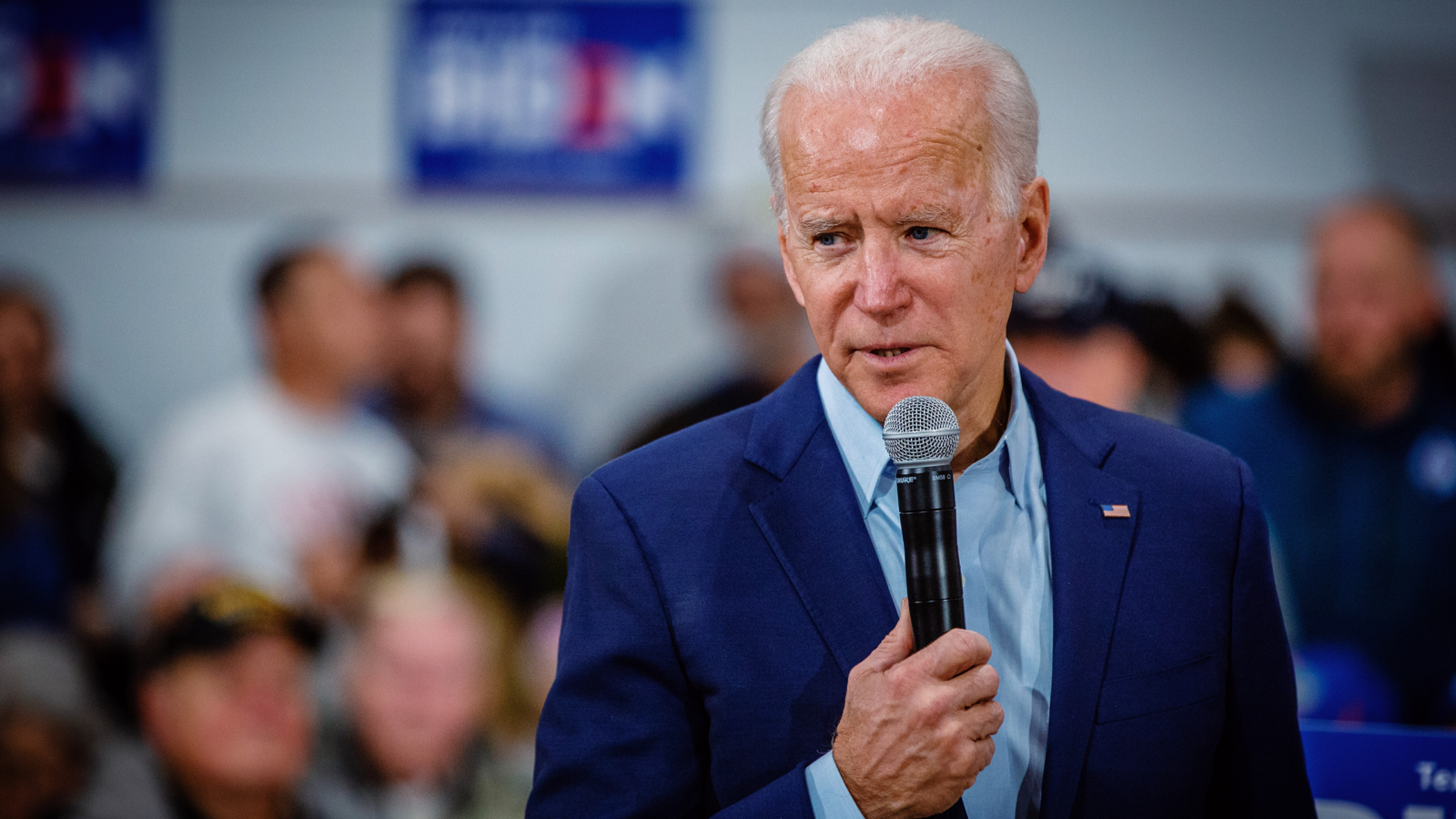Good morning.
It’s become necessary to destroy the village in order to save it. California-based tax software company Intuit said Wednesday that it will lay off 1,800 employees as it prepares for plans in fiscal 2025, which starts in three weeks, to… hire 1,800 employees. The new hires will focus on growth areas including artificial intelligence — a technology that definitely doesn’t pose a risk to the employment of people in the tax software industry.
US, Mexico Agree to Steel Import Rules Against Chinese Circumvention

Be steel, my protectionist heart.
The US and Mexico announced Wednesday that they would apply tariffs to some steel and aluminum imports to keep Chinese metals from making their way across America’s southern border. More tariffs — which some fear will have negative impacts at home in the USA — could be on the way.
Heavy Metal Levy
US steel stocks have underperformed this year — Nucor is down 12%, Cleveland-Cliffs 24%, and U.S. Steel 21% — and steel prices have fallen as the industry continues to work through pandemic stockpiles. Against this backdrop, the White House announced plans to triple levies on steel and aluminum from China to 25% in May, citing Beijing’s subsidies for the metal industries.
The new policy is being conducted jointly with Mexico, which will require its importers to disclose where their steel and aluminum come from. Steel not melted and poured in the US, Canada, or Mexico will be subject to the 25% tariff, while aluminum products that contain primary aluminum smelt or cast in China, Belarus, Iran, or Russia will be hit with 10% tariffs. In practice, it’s less an escalation of the US-Sino trade war than a preemptive measure to shore up ironclad import controls:
- Only about 13% of the 3.8 million tons of steel imported from Mexico is melted and poured outside North America, according to US officials, and only 6% of the 105,000 tons of aluminum imported will be impacted.
- US officials, however, are worried that Chinese steel producers could use Mexico, which has duty-free access under the USMCA, as a backdoor to the US market. China’s once-booming real estate sector, which powered ancillary industries like construction, is in crisis, and saw new sales fall 20% in the first two months of 2024; analysts at S&P said earlier this year that China’s domestic steel demand in 2024 is likely to flatline or decrease modestly, with producers looking to export markets.
Friendly Fire: Even so, the tariffs could eventually make downstream manufacturing more costly. When the US imposed steel and aluminum tariffs on China in 2018, General Motors and Ford both said their costs rose over a billion dollars, and laid off thousands of workers.
8% of CO2 Emissions Come from Concrete Production…

…on top of that, the overuse of concrete in urban areas hinders rainwater absorption into natural watersheds, leading to stormwater runoff that brings pollution into our lakes, rivers, and oceans.
There is no going back to horse and buggy. But there is a way to reduce concrete’s negative externalities: AquiPor’s revolutionary new porous concrete.
Using a fraction of the energy and producing less CO2 than regular concrete, AquiPor’s concrete allows water to pass through while filtering out pollution and particulate matter on the surface. Freshwater can return to its source, and cities are better able to manage stormwater flooding and reduce pollution.
Sound like a win-win? Grab a piece of the company behind this transformative technology poised to revolutionize the $363 billion global concrete industry and promote a greener future.
CNN Announces Layoffs, New Digital Subscription Business
Same as the old boss?
In a memo to staff on Wednesday, CNN chairman Mark Thompson announced a series of major changes at the cable news network, including the layoffs of 100 employees, a reorganization of its newsrooms, and the launch of its “first direct-to-consumer subscription product.” Sounds a lot like the short-lived, ill-fated CNN+, which the network’s new owners promptly shut down a little over two years ago because it didn’t fit their vision.
News You Can Lose
Like every other corner of the linear TV business, cable news is in an existential crisis. And perhaps no network more so than CNN. Following parent-company Warner Bros.’ merger with Discovery in 2022, newly installed (and since dispatched) CEO Chris Licht reportedly pushed staff to take a slightly more down-the-middle approach to political reporting. In an age of hyperpolarization, that doesn’t get you very far; ratings have plummeted to a consistent third place for the past two years, outflanked on the Left and Right by MSNBC and Fox News.
Now, Thompson is trying to reorient the TV news giant for a future in which TV isn’t all that central to the news ecosystem. Though, in 2022, the company launched and killed subscription service CNN+ in the span of just a month, details about the new not-so-first-ever CNN digital subscription service hints that leadership may be a little more forward-thinking this time around:
- Essentially, the newsroom reorganization will tear down walls between CNN’s TV division and its web-based digital division, as well as barriers between its US and international bureaus, to create one unified newsroom.
- While details remain sparse, the yet-to-be-named subscription service appears to be built on top of the mostly text-based CNN.com, though it will highlight “CNN’s massive strength in video and anchoring/reporting talent,” per the memo — in other words, the platform will unify the network’s digital and TV arms. Thompson says he wants it launched before the end of the year.
The announcements served as a “[d]ose of cold realism in an industry that often manages to continue business-as-usual serving aging, shrinking audiences and dwindling number of advertisers while rhetorically insisting they are digital,” Rasmus Kleis Nielsen, director of the Reuters Institute for the Study of Journalism at the University of Oxford, wrote on X.
Crossfire: While CNN leans into a more à la carte strategy, the head honcho of parent WBD is seeing a slightly bigger picture. When asked about the upcoming presidential election at a media conference on Tuesday, WBD CEO David Zaslav said he simply hopes the winner is business-friendly, adding, “We just need an opportunity for deregulation so companies can consolidate and do what we need to to be even better.”
Microsoft’s Gaming Dreams Enter Their Price-Hike Era
When Netflix wanted more subscribers, it brought in a cheaper subscription tier. Microsoft saw that and said, “Hey, what if we flipped the script?”
Microsoft’s gaming division Xbox announced it’s splitting its hugely popular subscription service Game Pass — which allows players access to a library of games for a monthly fee — into two subscription tiers. The biggest and most popular games are on the new, more expensive tier. It’s part of an overarching bid to turn gaming into more of a platform.
Growth Game
Microsoft recently announced it would put massive franchise titles, including “Call of Duty,” onto Game Pass the day they were released. The move involves some auto-cannibalism, as extant Game Pass subscribers would have no reason now to spend $70 on “Call of Duty” — so Microsoft was potentially leaving potentially billions of dollars in revenue on the table.
But it turns out Microsoft had a trick up its sleeve. New subscribers who want to play big games on release day will have to pay a 25% premium on their monthly membership. Rhys Elliott, a gaming analyst at MIDiA Research, said that for Microsoft it’s all about reacting to a saturation point:
- “Xbox has largely maximized its subscriber base on console, so it’s looking to maximize average revenue per paying user (ARPPU) and onboard new subscribers with the higher pricing precedent,” Elliott told The Daily Upside, adding, “Expect more price increases in the future.”
- Xbox is increasing prices for PC gamers as well as on its Xbox console, which Elliott says suggests it may have found its audience in that market is also saturated.
Every Game Everywhere All At Once: “At the end of the day, these changes reflect Xbox’s recent strategy: upselling fans to [Game Pass] Ultimate and increasing ARPPU ahead of the company’s huge off-platform mobile/cloud push,” Elliott said. “PC and console will remain important, but those markets are reaching saturation and Xbox needs growth (it’s a public company in the time of Big Tech efficiency and cuts),” he added.
A Smooth Alternative to Stocks. The global whiskey market is expected to explode from $59.8B to $81.2B by 2025 (thank you, craft cocktail movement). Vinovest has turned this booming industry into an actionable opportunity for investors, tapping into whiskey’s bond-like lack of volatility. They’ve already returned $27.5M in capital to investors. Add a barrel of whiskey to your portfolio today, with Vinovest.
Extra Upside
- Overboard: Microsoft withdraws from its observer seat on OpenAI’s board, and Apple will drop its plans to join amid antitrust scrutiny.
- Domicile Exile: The number of millionaires is growing almost everywhere in the world, with Britain being a notable exception, according to UBS.
- There’s a Lack of Slap in Your Inbox. That’s why The Hustle exists. This daily newsletter wraps up business and tech into savory 5-minute reads for over 2.5M+ self-starters and info junkies. You’ll get the facts and stats, without the FUD and fluff. Sign up today.*
* Partner

